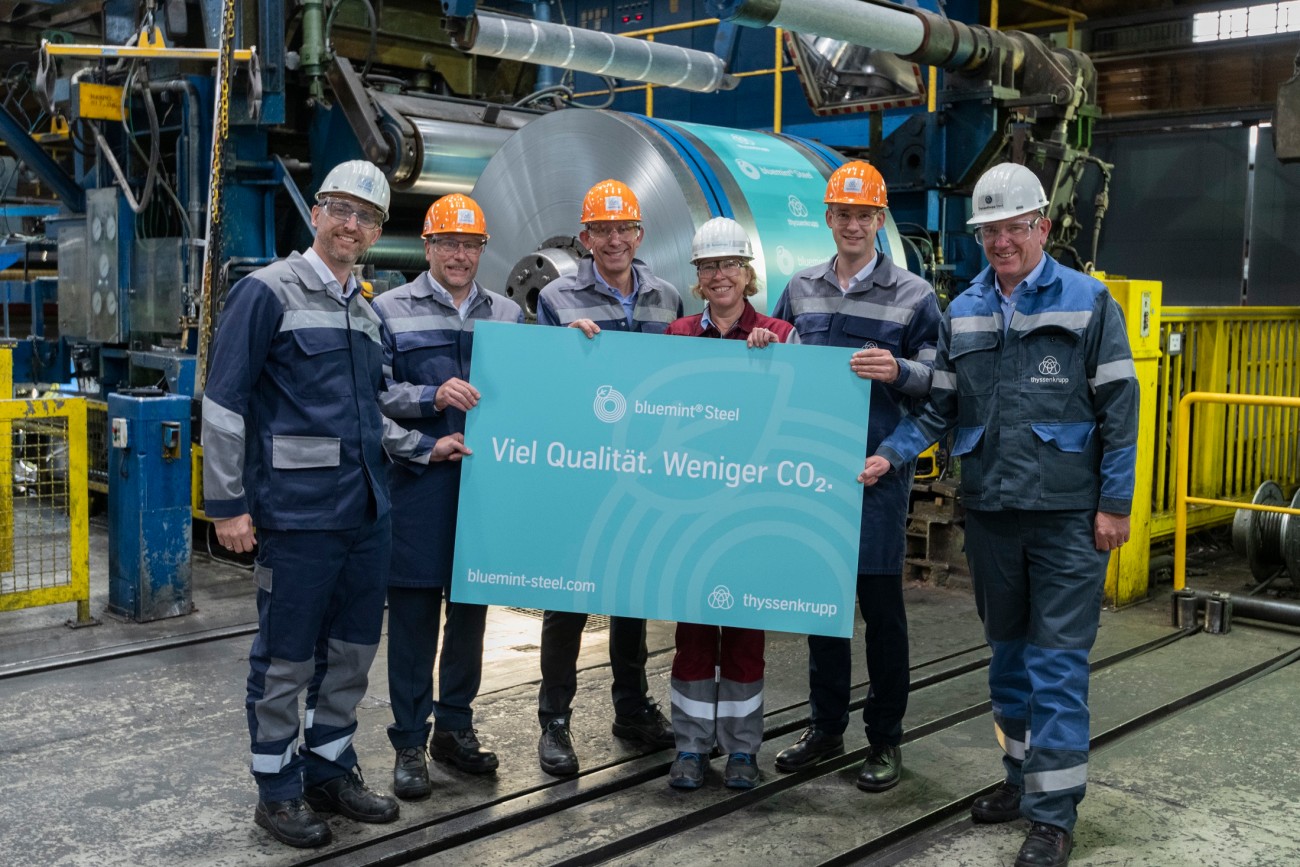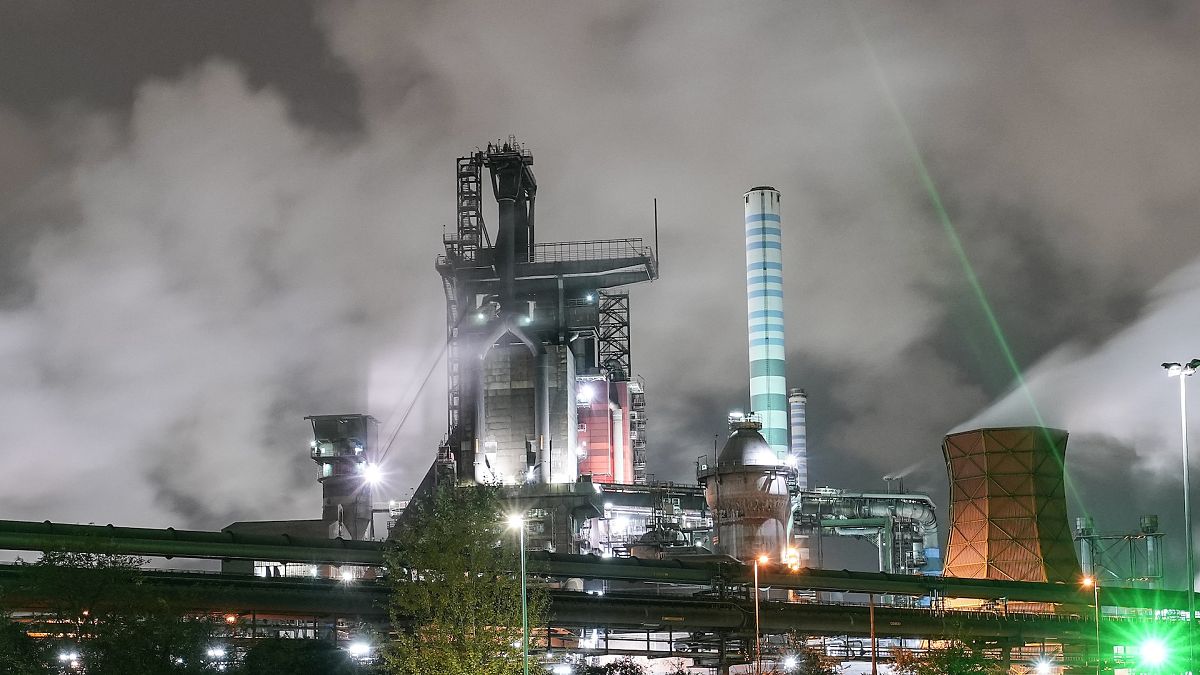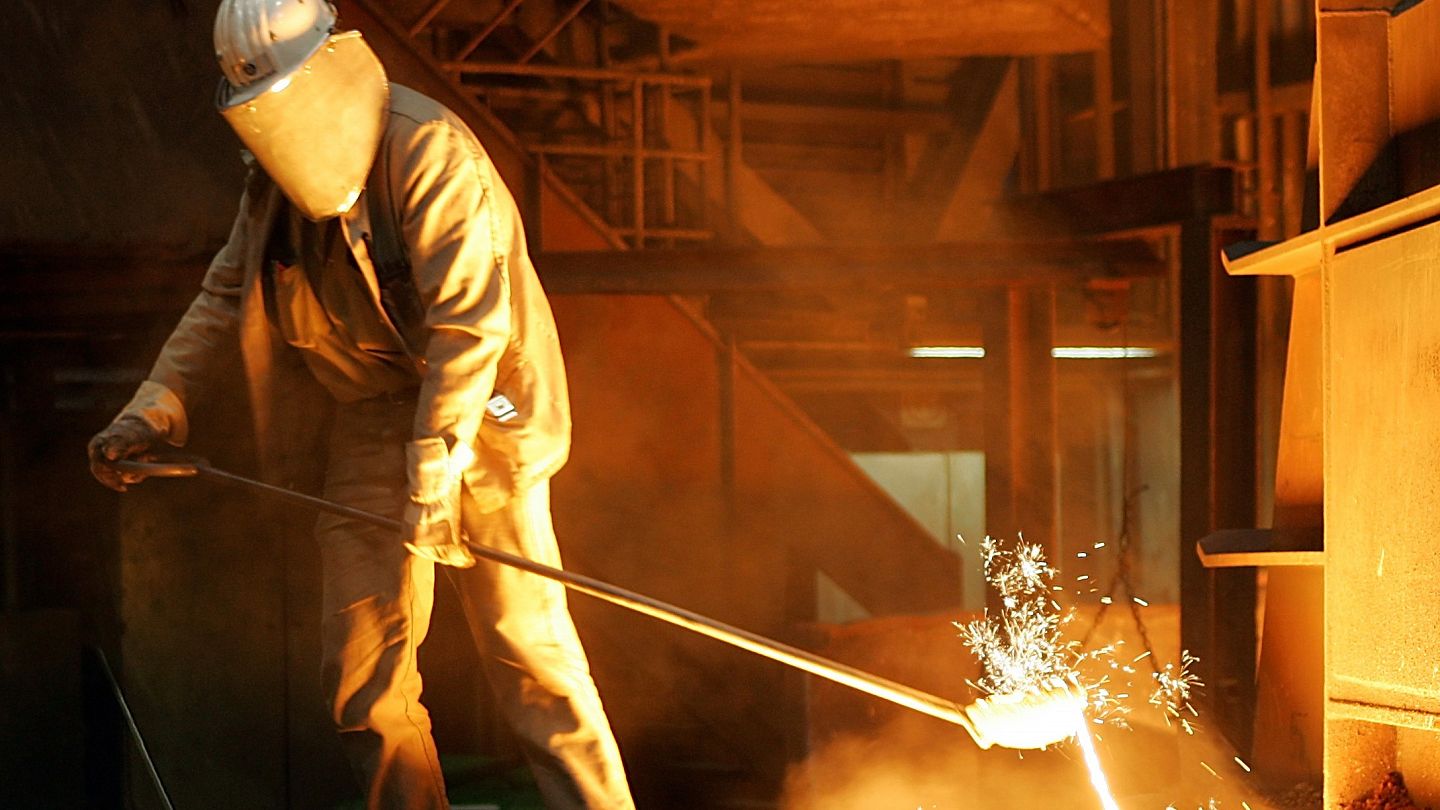ThyssenKrupp To Ruthlessly Slash 11,000 Jobs In Steel Division Amid Major Restructuring!
ThyssenKrupp Steel to cut 11,000 jobs amid restructuring, citing losses, competition, and high costs, while pushing for green steel and sustainability goals.

ThyssenKrupp Steel Europe (TKSE) is Germany’s biggest steel maker and a subsidiary of ThyssenKrupp AG. It declared a significant restructuring programme due to increasing operating losses and pressure from intensifying global competition.
From cheap Asian steel imports to soaring energy costs and a slowing global economy, operating losses in the past year brought TKSE’s total to four out of the last five years. The company announced its intention to axe 11,000 employees from its 27,000-strong workforce to restore stability and competitive advantage.
The restructuring will involve two phases. The literature review also reveals that future cost savings are expected to come from reduced organisational capitalisation for 5,000 jobs by 2030 and redeployment through spin-offs or divestitures of another 6,000. This process is intended to secure a ten percent or more decrease in personnel expenses within the next several years.

“To further increase ThyssenKrupp Steel’s own productivity and operating efficiency and reach a competitive cost level, urgent measures are now necessary, and sustainable structural steps must be taken in the long term to ensure the company’s survival in this competitive environment”, the company elaborated.
Key Details of ThyssenKrupp Steel Division’s Restructuring Announcement
Leading German steel manufacturer ThyssenKrupp Steel Europe (TKSE) has announced a radical cost-cutting plan to tackle its current operational challenges and the firming up competition in the global market. The announcement includes the following key details:
- Job Cuts: Of the total steel division employees, 27,000, 11,000 jobs will be cut.
This will occur in two phases: Originally, 5,000 jobs will be reduced by 2030. In spin-offs or divestitures, 6,000 people will lose their jobs.
Cost Reductions: To improve cost-effectiveness, the company intends to cut average personnel costs by 10% over several years.
- Challenges Driving the Decision:
Cheaper Imports: There is a lot of pressure coming from low-priced Asian steel makers that has distorted ThyssenKrupp’s strategic position.
High Energy Costs: In order to make it worse, the power prices have been increasing in Germany, which heavily affected the company.
Weak Global Economy: Sluggish global appetite has added to the problems; the company has been operating losses in the last four out of five financial years.
- Strategic Goals: The restructuring seeks to increase efficiency and operations performance and achieve optimum cost within the steel division, thus developing sustainability.
ThyssenKrupp case reflects emerging headwinds that traditional manufacturing industries are now experiencing in Europe, this has prompted more companies to constantly adapt, innovate and seek for ways and means to sustain and revamp in the emerging competitive market world.
Reasons Behind ThyssenKrupp’s Job Cuts
The recent lay off by ThyssenKrupp company where 11, 000 employees were laid off at its steel division based on its financial problems, strategic management processes and sustainable industrial practices. The action is to remove some significant structural issues that have hindered the business division from achieving operational efficiency and sustainable profitability for a very long time. The operating loss which has been reflected from the steel division in the last five years clearly indicates that changes are the need of the hour.
Some of the main causes have been to do with reducing the cost-cutting measures, where one of the major has been the reduction of the number of people employed.” Germany has one of the highest energy prices within the EU, which has contributed significantly to the high cost of production, undermining ThyssenKrupp’s competitiveness to steel producers in Asia.
Reducing personnel costs by 10% must also contribute to the company’s general financial relief and, therefore, better profit rates. This restructuring also shows a distribution of the effects of increasing competition from around the world on existing participants in this industry.

One of the key reasons behind these changes is ThyssenKrupp company’s focus on sustainable development and decarbonisation. As the general trend in the production of steel changes to more environmentally friendly practices, the company is now turning to practice sustainable features.
In order to decarbonise steel production, there is a lot of requirement of capital which leads to the need of resource management and efficiency. This transition is consistent with patterns across the industry of imposing lower environmental impact while at the same time requiring strategic prioritisation of resource redistribution.
Further, low steel consumption globally and economic instability have affected ThyssenKrupp steel even more than before. This puts pressure on the company to redesign strategies of operation since it is confronted with much cheaper imports.

The restructuring measures aim to enhance productivity and reduce costs at ThyssenKrupp, which is essential for the company’s success in a dynamic market. While the removal of jobs may be somewhat painful they act as a snap-shot of the issues that affect traditional industries as they look to adapt to economic concerns as well as environmental responsibility.
ThyssenKrupp’s Steel Division Restructures for a Sustainable Future
ThyssenKrupp’s steel arm is in the process of a radical restructuring to deal with emerging problems such as operating losses in four of the last five years, high energy costs, and competition from low-cost Asian players.
New plans at the company include scaling down employment by 11,000, decreasing personnel expenses by 10%, etc through spin offs and divestitures. This is the largest corporate reshuffle that leans with ThyssenKrupp’s efforts to increase efficiency, reduce costs and become a pioneer in sustainable steel manufacturing.
Due to the need for steel companies to reduce emission levels, the company is redirecting capital into generating green technologies for the organisation with chronic long-term objectives in order to sustain itself in an increasingly environmentally conscious and competitive global environment.
Financial Pressures and Market Dynamics Behind ThyssenKrupp’s Workforce Reduction
ThyssenKrupp latest plan to sack 11,000 workers in their steel division is greatly shaped by cut throat competitiveness of dominant Asian steel makers. Noteworthy steel producers that have revolutionised steel production include China Baowu Steel Group, HBIS Group, POSCO, Nippon Steel Corporation and JFE Steel Corporation to mention but a few enjoy economies of scale, efficient technologies and cost leadership strategies.
These producers can rely on governmental support, can invest in automation as a key strategic area, and can acquire the primary input in tart manufacturing at a lower cost. Further, their strategy, for instance investment in new products like light, strong steel for automobile and construction industry puts them in a very useful position.

The Indian steel giants like Tata Steel and JSW Steel and Chineses steelmakers like steelmaking Shougang Group, have intensively extended their outlet across the world by keeping the production cost effectively lower while making sure the production rate is high.
For ThyssenKrupp which is faced with increasing energy costs, operational loses, and a declining global economy, these market forces have forced the management to make organisational change and cuts that can make the firm viable and competitive in the market.
Socio-Economic Impact of ThyssenKrupp’s Job Cuts
The loss of 11,000 jobs in ThyssenKrupp’s steel division will have socio-economic impacts on the organisation’s employees and the societies in which the steel division operates. For the workers at the plant level, the ramifications that come close are job loss, interruption to employment, and likely challenge in procuring the similar form of employment in the future especially for those regions whereby the production was a hub of the economy.
This will cause reduction in employment opportunities, mounting unemployment, poor income levels in homes and poverty. In this case, experience also teaches that the social and psychological costs of job loss also cause stress and uncertainty.

Local communities will also feel the impact in a way that was described above: businesses that depend on ThyssenKrupp’s employees’ demand will see that demand decrease, which will lead to even more people living in poverty, struggling with unemployment and requiring financial assistance from local government for health care and education. These include a decline in property value and a reduction in investment in local structures, hence a reduced quality of life.
Nevertheless, ThyssenKrupp’s strategic direction in automation and decarbonisation in the long run might cause new job creations for the company; the issue lies in the fact that workers who could be displaced in the production line have to be retrained to fit to the new jobs.
As such, the restructuring might lead to some problems immediately; however, it is crucial not to forget about the necessity of support measures in the form of qualification improvements for the employees and other forms of organised community investments.
ThyssenKrupp’s Green Steel Ambitions: Impact on Job Numbers and the Industry
Green steel production is one of the ways through which ThyssenKrupp is reshaping its firm to fit the EU climate goals and decrease the emanating pollution levels. Instead of traditional manufacture that contributes to the emission of the greenhouse gas, green steel, made by using renewable energy or low carbon processes, such as hydrogen based steel making, is a better option.
This change can promote green jobs in the innovative industries like renewable energy and hydrogen production at the same time displace jobs in steel industries whose process requires the use of coals. The transformation will likely entail a significant upgrade of the current personnel for the green steel business.
Even greater automation and digitalisation of the work process could next decrease demand for labor again. At the same time, green steel may provide many long-term opportunities for the industry growth and technological improvement, but it raises some concerning issues such as adaptation of the personnel and probable industry consolidation due to high costs for eco-friendlier production among numerous small-scale enterprises.
In conclusion, ThyssenKrupp green steel initiative could revolutionalise the whole industry but this will be possible under the right balance thus providing job security to the workers amid fair transition.
Reactions to ThyssenKrupp’s Job Cuts and Future Commitment to Climate-Friendly Steel
The union has again reacted furiously to job cuts at the ThyssenKrupp steel division, particularly after the recent notification about 11,000 job losses. Knut Giesler, the official of the IG Metall union of North Rhine-Westphalia, Germany’s industrial powerhouse, said that any such move to slash more than 11,000 jobs and shut down a site would attract vigorous resistance from the union.
Some people that involves criticising the industrial proficiency following ThyssenKrupp steel-making background to the early nineteenth century. To the axed jobs, while voicing Germany’s willingness to host steel production, Economy Minister Robert Habeck urged that it be done while embracing cleaner manufacturing techniques.
Habeck insisted again that the country will guarantee that the sector has a future through more sustainable and low-carbon production. The dismissal of employees is particularly occurring at a time when Germany’s industrial segment is struggling with declining output, weak foreign demand, and high cost levels.
It has raised the controversies regarding how to overcome the industrial relations in Germany which has become a worldwide industrial hub but at the same time the country has also been in a hurry to move to a green economy: unions and government officials are straining for measures to protect the job and at the same time make the German industrial sustainable.
ThyssenKrupp’s Future Strategy
It effectively announced 11,000 job losses and is restructuring its steel division, all of which fit well with ThyssenKrupp’s goals and aspirations as the company acts as a player in the global steel industry.
As the company faces mounting challenges from cheaper Asian competitors and high operational costs, these job cuts are part of a larger strategy to improve efficiency and cut costs so that the company can stay competitive.
ThyssenKrupp is looking to lead the transition to a more sustainable steel industry as it shifts towards green steel production, with investments in decarbonisation efforts at the core of its future growth strategy.
This restructuring not only would meet the immediate financial necessities but also position ThyssenKrupp to achieve an environmentally friendly steel need on the global level; that is, innovation coupled with long-term sustainability at an increasingly eco-conscious marketplace.
ThyssenKrupp’s Restructuring in Context: A Global Shift Towards Automation, Digitisation, and Sustainability
Layoffs as a strategy are not new, and the recent decision by ThyssenKrupp to axe 11, 000 workers during its restructuring process is consistent with job shedding by steel giants across the globe to embrace the automation, digitisation and/ or sustainability agendas. Comparable trends are observed in large scissor makers too, such as ArcelorMittal and Tata Steel, which have also recently pursued many strategic reorganisations in an attempt to sustain their competitive advantage in the growing and dynamic business environment.
These changes are driven by automation and digitisation, which facilitate operating cost-cutting and operational enhancement across companies. For instance, ThyssenKrupp is moving to green steel manufacturing, while the whole industry is attempting to reduce greenhouse gas emissions and meet strict environmental standards.
Both ArcelorMittal and Tata have elaborated on their future CO2 reduction targets, which have been adopted by newcomers of technology frames such as hydrogen-based steel production and electric arc furnaces. Although these financial initiatives are beneficial for the sustainable setting in the long run, they necessarily entail big changes within the workforce and cost reductions in the short-term setting.
Indeed, as industry processes upgrade to modern technologies, the emphasis is being driven to improve efficiency and energy use, although improving profitability and sustainability impacts may increasingly result in pressure on employment levels internationally.
Shareholder and Market Reactions to ThyssenKrupp’s Restructuring
It has explained such controversies as when ThyssenKrupp came up with its intended restructuring plan of laying off 11,000 employees due to a shift strategy, though it received divergent responses from shareholders, analysts and the stock market. Some of the shareholders have undertaken certain speculative gains and losses to reflect their concerns for the fundamental restructuring of the company around sustainability and green steelmaking in a more consistent manner.

Some critics have argued that the savings achieved by the cuts may actually produce long-term gains since dilapidated headcount expenses of the company can be trimmed and could enhance its competitiveness. This is in line with the market’s approach where shareholders are beginning to recognise firms working towards innovation and decarbonisation as measures towards future profitability of firms in the steel industry.
However, voices are raised over short term economic and social loss in terms of job losses especially in the industrialised regions of Germany. The stock market may sustain this sort of mixed feel about ThyssenKrupp periodic fluctuations: up and down, based on how it handles the restructuring and/or pursues its next phase of growth.
However, this is contingent on the company successfully transitioning to greener and more automated production to achieve long-term stock price gains or positives, even when short-term gyrations may occur due to uncertainties and active labour issues.









